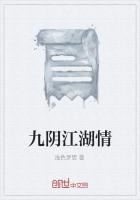"AND now, uncle," asked Harry, who was a favourite with the old gentleman, "can you tell me what you do when you put a candle out?""Put an extinguisher on it, you young rogue, to be sure.""Oh, but I mean, you cut off its supply of oxygen," said Master Harry.
"Cut off its what?"
"He means something he heard at the Royal Institution," observed Mrs. Wilkinson. "He reads a great deal about chemistry, and he attended Professor Faraday"s lectures there on the chemical history of a candle, and has been full of it ever since.""Now, you, sir," said Uncle Bagges, "come you here to me, and tell me what you have to say about this chemical. eh? -or comical, which? -this-comical chemical history of a candle." "Harr y, don"t be troublesome to your uncle," said MrWilkinson.
"Troublesome? Oh, not at all. I like to hear him.""Let us get a wax candle then, uncle. There"s one on the mantle-shelf. Let me light it.""Take care you don"t burn your fingers, or set anything onfire," said Mrs Wilkinson.
"Now, uncle," commenced Harry, having drawn his chair to the side of Mr. Bagges, "we have got our candle burning. Look down on the top of it, around the wick. See, it is a little cupfull of melted wax. The heat of the flame has melted the wax just round the wick. The cold air keeps the outside of it hard, so as to make the rim of it. The melted wax in the little cup goes up through the wick to be burned, just as oil does in the wick of a lamp. What do you think makes it go up, uncle?""Why-why, the flame draws it up, doesn"t it?""Not exactly, uncle. It goes up through little tiny passagesin the cotton wick, because very, very small channels, or pipes, or pores, have the power in themselves of sucking up liquids. What they do it by is called capillary attraction;-just as a sponge sucks up water, or a bit of lump-sugar the little drop of tea or coffee left in the bottom of a cup.
"Now, I"ll blow the candle out; not to be in the dark, but to find out what it is. -Look at the smoke rising from the wick. I"ll hold a bit of lighted paper in the smoke so as not to touch the wick. But see, for all that, the candle lights again! So this shows that the melted wax sucked up through the wick is turned into vapour, and the vapour burns. The heat of the burning vapour keeps on melting more wax, and that is sucked up too within the flame, and turned into vapour and burned; and so on till the wax is all used up and the candle is gone. So the flame, uncle, you see, is the last of the candle; and the candle seems to go through the flame into nothing, although it doesn"t, but goes into several things; -and isn"t it curious, as Professor Faraday said, that the candle should look so splendid and glorious in going away?
"I dare say that the flame of the candle looks flat to you; but if we were to put a lamp-glass over it, so as to shelter it from the draught, you would see it is round-round sideways, and running up to a peak. It is drawn up by the hot air. You know that hot air always rises, and that is the way smoke is taken upthe chimney. What do you think is in the middle of the flame?" "I should say fire," replied Uncle Bagges.
"Oh, no. The flame is hollow. The bright flame we see is something no thicker than a thin peel or skin, and it doesn"t touch the wick. Inside of it is the vapour I told you of just now. If you put one end of a bent pipe into the middle of the flame, and let the other end of the pipe dip into a warm bottle, the vapour or gas from the candle will mix with the air there; and if you were to set fire to the mixture of gas from the candle and air in the bottle, it would go off with a bang.""I wish you"d do that, Harry," said Master Tom, the younger brother of the juvenile lecturer.
"I want the proper things," answered Harry. -"Well, uncle, the flame of the candle is a little shining case, with gas in the inside of it and air on the outside, so that the case of flame is between the air and the gas. The gas keeps going into the flame to burn; and when the candle burns properly, none of the gas ever passes out through the flame, and none of the air ever gets in through the flame to the gas. The greatest heat of the candle is in this skin, or peel, or case of flame.""Case of flame!" repeated Mr. Bagges. "Live and learn. I should have thought a candle-flame was as thick as my poor old noddle." "I can show you the contrary," said Harry. "I take this pieceof white paper, look, and hold it a second or two down on the candle-flame, keeping the flame very steady. Now, I"ll rub off the black of the smoke, and-there-you find that the paper is scorched in the shape of a ring, but inside the ring it is only dirtied, and not singed at all.""Seeing is believing," remarked the uncle.
"But,"proceeded Harry, "there is more in the candle-flame than the gas that comes out of the candle. You know a candle won"t burn without air. There must be always air around the gas, and touching it, as it were, to make it burn. If a candle hasn"t got enough of air it goes out, or burns badly, so that some of the vapour inside of the flame comes out through it inthe form of smoke; and this is the reason of a candle smoking. So now you know why a great clumsy dip smokes more than a neat wax candle: it is because the thick wick of the dip makes too much fuel in proportion to the air that can get to it.
"What should you say now," continued Harry, "if I were to tell you that the smoke that comes out of a candle is the very thing that makes a candle burn with a bright light? Yes; a candle shines by consuming its own smoke. The smoke of a candle is a cloud of small dust; and the little grains of dust are bits of charcoal, or carbon, as chemists call it. They are burned the moment they are made; and the place they are made in is the case of flame itself, where the strongest heat is. The great heat separates them from the gas which comes from the melted wax; and as soon as they touch the air on the outside of the thin case of flame they burn.""Can you tell me how it is that the little bits of carboncause the brightness of the flame?" asked Mr. Wilkinson.
"Because they are pieces of solid matter," answered Harry. "To make a flame shine, there must always be some solid, or at least dense, matter in it.""Very good," said Mr. Bagges; "solid stuff necessary tobrightness!""Some gases and other things," resumed Harr y, "that burn with a flame you can hardly see, burn splendidly when something solid is put into them. Hydrogen gas if blown through a pipe, burns with very little light; but if the flame isblown upon a piece of quick-lime,it gets so bright as to be
quite dazzling. If you now send some oxygen on to the flame,the flame gets no brighter, but the lime shines like a little sun. Make the smoke of oil of turpentine pass through the sameoxygen, and it gives the flame a beautiful brightness directly. Well, carbon, or charcoal, is what causes the brightness of all lamps, and candles, and other common lights; so, of course, there is carbon in what they are all made of.""So carbon is smoke, eh? and light is owing to your carbon. Giving light out of smoke, eh? as they say in the classics," observed Mr. Bagges.
QUESTIONS
When a candle burns, why does the melted wax go up through the wick? What happens when you hold a bit of lighted paper in the smoke of a candle after it has been extinguished? What does this show? Of what does the flame of a candle consist? What is inside? How can this be shown? Without what will a candle not burn? Why does a "clumsy dip smoke more than a neat wax candle"? What in reality is the smoke of a candle? Why is it that the little bits of carbon cause the brightness of the flame? Illustrate this by the example of the oxy-hydrogen lime-light.












